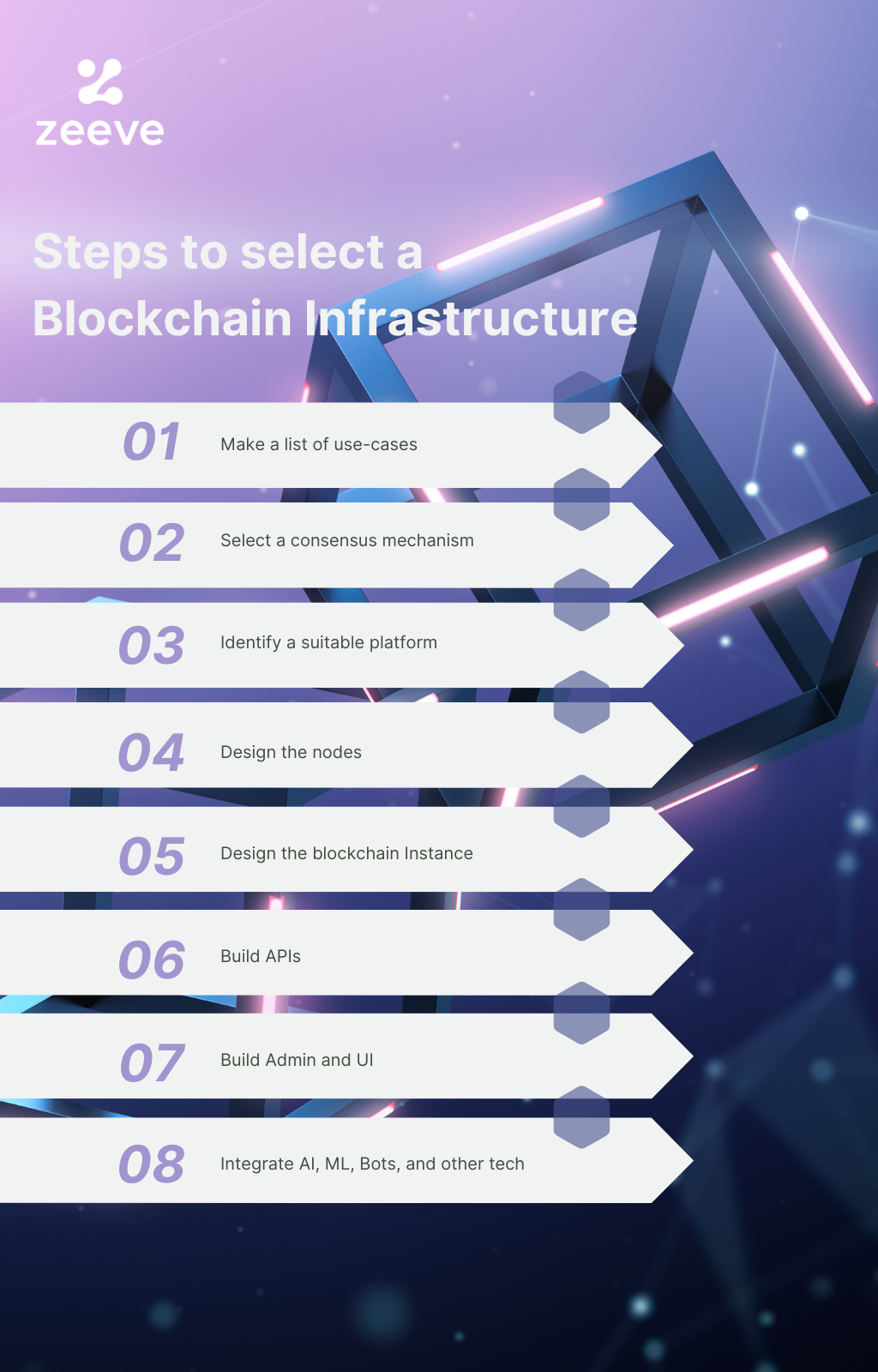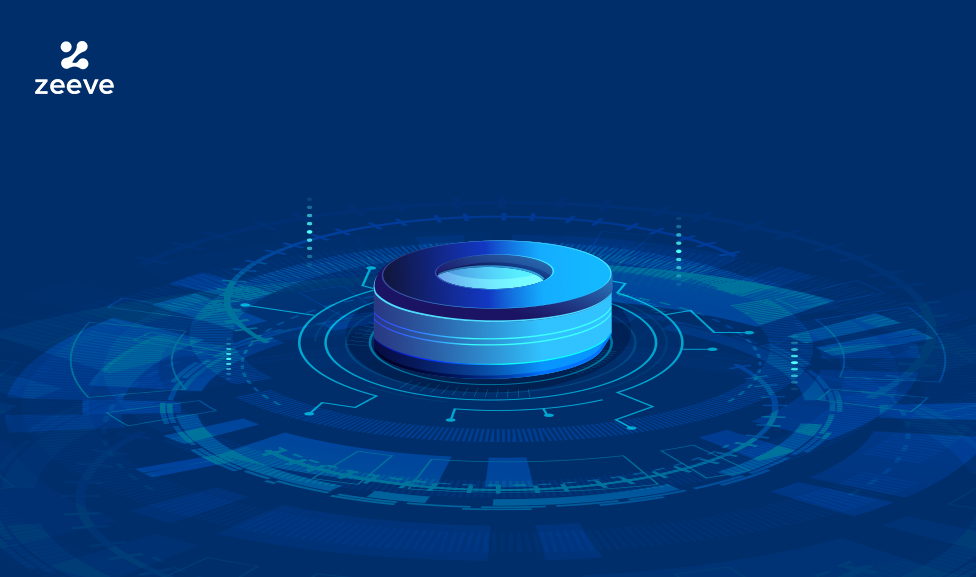The technological advancements in blockchain technology are promising, the reason being the core features such as decentralization, immutability, faster settlement, and better security.
Blockchain is empowering enterprises and individuals to maintain record-keeping by saying no to discrepancies. The transactions are recorded on the peer-to-peer network on the blockchain or the distributed ledger.
Do you know why global spending on blockchain infrastructure has reached $11.7 billion in 2022? Well, the reason is the enticing new possibilities for everyone. We are witnessing multi-party trades where we can settle the transactions in a matter of minutes, along with secured data exchanges.
Therefore to support such technology, there should be high-performance computing capabilities. In addition, the hardware and software that support blockchain infrastructure should be scalable to allow the network to grow and be redundant enough for the systems to secure data.
In the blog, we will walk you through “what a blockchain core infrastructure looks like” and the security management of blockchain infrastructure. Keep reading!!
Essentials of Blockchain Infrastructure
For any technology, it is the infrastructure or framework that is important for its functioning. The infrastructure is a part of blockchain architecture. It is a combination of both hardware and software. To lay the foundation of the blockchain, one needs to have the infrastructure resources.
To build a robust infrastructure, one of the important steps is to decide the use case. Since every organization has a different need, the use case defines how to move ahead. The use case can be data authentication, verification, smart asset management, or smart contract deployment.
The storage and processing power are core elements similar to other advanced computing technologies. Further, there should be low latency for processing the transactions at a larger scale. Before moving ahead, let’s understand the core components of architecture which have 6 elements:
- Node: A computer that has a copy of the complete ledger.
- Block: A data structure maintaining the set of transactions dispersed throughout the network.
- Chain: Block arranged in a sequence.
- Transaction: The smallest building block of the blockchain network.
- Miner: The specific nodes that verify the blocks before integrating with the network.
- Consensus: Rules and arrangements in a blockchain network followed to carry out the transactions.

Blockchain Hardware Requirements
The hardware maintains, operates, and coordinates the blockchain network. To keep the blockchain infrastructure functioning the hardware requires management and engagement. Discussing the core blockchain hardware requirements:
Blockchain and GPU (Graphic Processing Unit)
In blockchain-related operations, a CPU cannot process streams of repetitive data at high speeds, such as executing many blocks of code. Therefore, GPU does the digital rendering of the computer system.
The GPU can manage high computer density and many computations per second. GPUs are useful in blockchain mining and have 800 times more speed than a CPU. In addition, the GPU has an Arithmetic logic Unit to solve complex mathematical computations.
The GPU helps allow faster processing, and using enterprise-grade GPU reduces operational costs. Also, the GPU doesn’t get affected by the hashing algorithm.
The GPU-as-a-service is offered by centralized tech companies such as Google and Amazon. Thus blockchain-based platforms can leverage GPU by presenting decentralized networks.
Application-Specific Integrated Circuits
ASIC chips compete with GPU; instead of being general purpose, they are specifically designed and integrated circuits. They have high computing capacity and work on less electricity. The circuits are employed for the purpose of mining.
However, ASIC has centralized the mining as only a few companies afford to buy and set up mining farms. Furthermore, there are many ASIC-resistant tokens that GPU still mines. A recent development, Field Programmable Gate Arrays, are also giving competition to GPU.
Nodes
A node is a computer that carries out the function of storing records, validating transactions, and verifying blocks. Nodes are crucial in a proof-of-stake consensus mechanism. All the nodes form a network and act as a communication hub.
Anyone with a basic understanding of technology can run a node and feel like being a part of the blockchain network. Also, to be noted that running a node requires a large amount of RAM. This is where the wallets are useful to those blockchain users who have no interest in downloading the complete blockchain history.
On the other hand, to run a master node, you need to deposit crypto as collateral. The collateral is collected so that just in case the masternode is exploited, the collateral will serve as a hostage.
Firstly, there are full nodes to store all the blockchain data which is pruned periodically. Then there are lightweight nodes that keep the block headers of all the transactions. Lastly, there are archive nodes that store all the transactions, even those that can’t be found on a full node. The historical stats are stored on the archive node as the full nodes are pruned. The nodes that form the PoS network are:
- Participation nodes: A value is staked to become a validator or active participant. Later, the participant nodes create blocks, validate transactions, execute blocks and earn blocks.
- Read/write nodes: The nodes are there to obtain information and verify the transaction. It also writes data regarding smart contracts and other transactions.
- Sentry nodes: Sentry nodes or the proxy nodes stay private from the public. It works as a communication link between the participation node and the blockchain network. The sentry nodes act as a safety wall and protect participation nodes from attacks.
- Relay nodes: The nodes are essential to forming a communication between the node-to-node.
Clients
Clients are multiple software implementations that take care that the functions are performed well. The clients manage the interactions with programming languages such as — Go, Rust, Java, C#, and many others. Clients handle a variety of programming languages. For example, Eth2 supports Lighthouse, Teku, Prysm Lodestar, and Nimbus.
Different programming languages have both execution clients and consensus clients. More number of clients makes the network more strong and eliminates the single point of failure.
Clusters
A cluster is a collection of network-specific nodes, supporting infrastructure, monitoring and alerting devices, and load balancing tools.
With the aid of the cluster master node, the applications run on the clusters.
The master node deploys and distributes the application on the nodes. The nodes’ status gets self-reported on the cluster master. By examining the report, it is decided whether the nodes will be upgraded or repaired.
As there are multiple servers in the network, a load balancing tool equally distributes traffic across all the nodes to improve responsiveness.
The monitoring and alerting device ensure that the nodes are reliable and stable in participating in the network. By adopting an alerting device, you may know if the CPU usage is increased, showing two reasons — either attack or an error in the code or the protocol update.
If the system runs out of commission, the failover protection is there to lessen the downtime. In addition, container services support the blockchain client APIs and gather all the applications to maintain multiple clusters.
Blockchain Software Requirements
The blockchain software requirements vary from one blockchain network to another; there is a basic requirement of — language, wallet, compiler, smart contract deployment-based tool, and framework. The software differs because the very first blockchain network worked on the Proof-of-Work (PoW) mechanism. However, there are now different consensus mechanisms, such as PoS, PBFT, DPoS, and many more.
Depending on the type of consensus mechanism chosen, the software requirements are fulfilled. Furthermore, the blockchains are also public, private, or permissioned. These are also key factors in understanding which nodes will be maintained. Thus, it is essential to understand the requirements first to build the software.
Security in Blockchain Infrastructure
There are requirements for deploying updates and patches to maintain security in the blockchain infrastructure. The security of the blockchain infrastructure can be maintained by encryption, deploying enterprise-grade private blockchain (in some cases), and replacing third-party vendors.
The blockchain-as-a-service providers are quite helpful in making the network more secure. The BaaS providers can build robust security features, operate data centres and maintain metrics and servers. Thus, deploying and managing the blockchain infrastructure efficiently.
Summing it all up
Thus, we understood that blockchain in itself comprises many elements that are the reason behind its great efficiency. There are both hardware and software requirements in the blockchain core infrastructure. Every element serves its own purpose to make blockchain technology beneficial in each way possible.
The infrastructure hierarchy is customizable as we move towards interoperable blockchain systems. The technology supports transparency and better functionalities. The future of blockchain technology will be brighter when more and more projects come forward and leverage the blockchain infrastructure.
Work with Zeeve
Are you planning to integrate blockchain into your organization? Then connect with Zeeve. We will deploy blockchain infrastructure at a faster pace without compromising on cost and security.
We are the leading blockchain infrastructure management platform and provide solutions that deploy with ease. We help enterprises and Blockchain startups to build, deploy and manage their decentralised applications(dApps).
We feature robust APIs to build DApps for many use cases across industries. So let’s connect to understand more about your organization. Feel free to contact us on Twitter and Telegram.






















